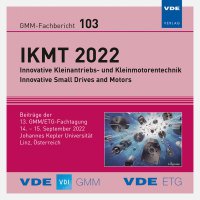Design of high efficient PM Synchronous Motor in ferrite technique with special regard to manufacturing aspects and application flexibility
Konferenz: IKMT 2022 - 13. GMM/ETG-Fachtagung
14.09.2022 - 15.09.2022 in Linz, Österreich
Tagungsband: GMM-Fb. 103: IKMT 2022
Seiten: 5Sprache: EnglischTyp: PDF
Autoren:
Frevert, Joerg (Hanning Elektro-Werke GmbH & Co. KG, Oerlinghausen, Germany)
Inhalt:
For small and medium sized manufacturers of electric motors, the requirements for motor design are very versatile due to the wide range of possible applications and customer-specific solutions. The motor design should be cost-effective and offer maximum flexibility in manufacturing. In order to be able to serve different industries, the requirements of the legislator must be taken into account, as well as sales-promoting aspects requested by marketing and customers such as high energy efficiency, low noise level, small installation space and low weight. Furthermore, the motor design should enable price-stable and reliable delivery performance for the years to come. For Permanent Magnet Synchronous Motors (PMSM), the hard magnetic material is a key component. In current motor designs, rare earth magnets are often used because of their high energy density to realize very compact and highly efficient motors. In recent uncertain economic times, topics such as secure supply chains and price stability have more and more come into focus. The effects of the transformation of the automotive sector towards e-mobility are also difficult to predict regarding the supply of raw materials such as magnetic material for industrial suppliers. Ferrite as a magnetic material is a globally readily available and price-stable raw material. The disadvantage of using ferrite instead of rare earth magnets in the motor design is the significantly lower magnetic flux density. Because the linked magnetic flux directly affects the achievable torque in electric motors, the substitution of rare earth magnets by ferrite magnets in existing PM motor designs is a tough challenge, if there is no acceptance of performance losses or an increase of space and weight. The present work deals with the development of an alternative motor design to an existing PMSM, which uses rare earth magnets and has been successfully established on the market for years. The current motor design is described. Based on the key properties the requirements for the alternative motor design are defined. Preliminary considerations regarding topology, rotor construction type or production flexibility are carried out with respect to manufacturing aspects. Multiobjective design optimization for PM Motor in ferrite technique is performed and most suitable model is selected. Prototypes are built, measured, and compared to the current motor design.


